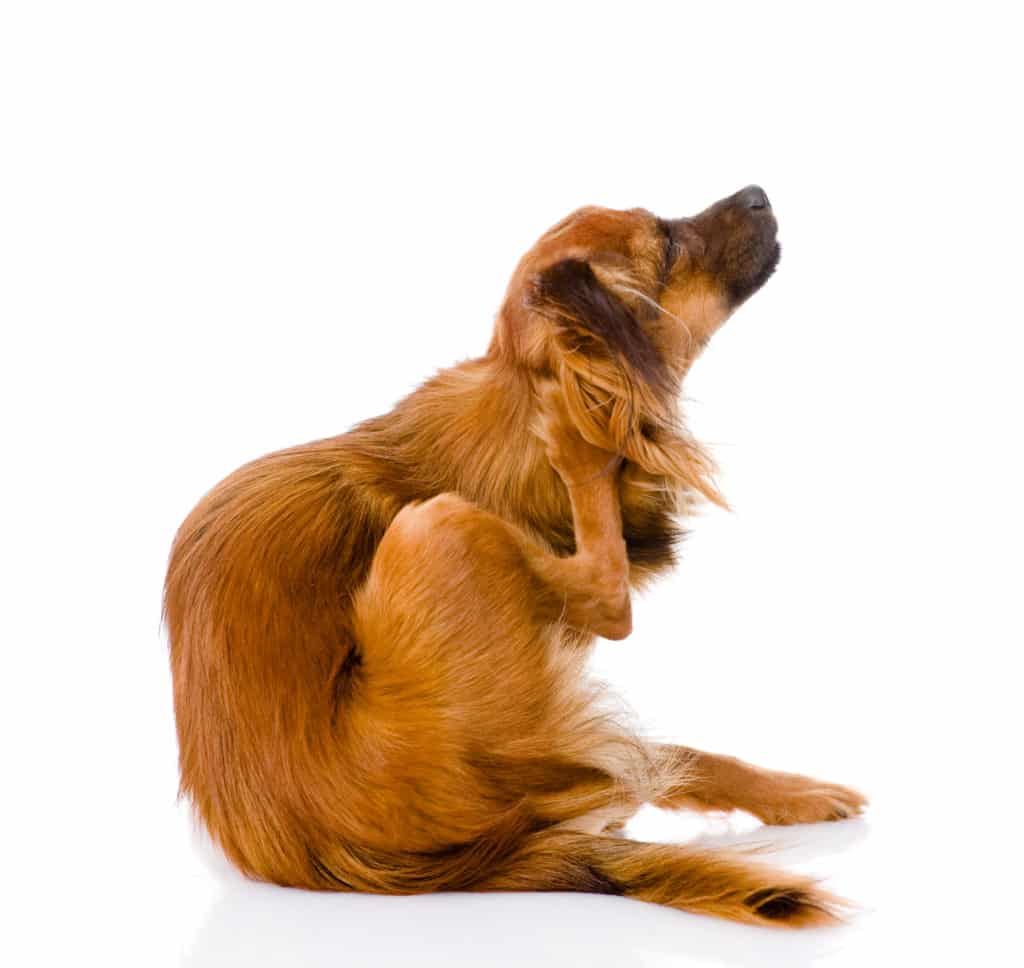Dog Health, Dog Lifestyle
How to Get Rid of Fleas on Dogs: 4 Top Tips
As a pet owner, you’re probably more than familiar with the dreaded flea. These blood-sucking parasites can be a nuisance for both you and your dog as not only are they itchy and irritating, but they can also infest your home and survive there without a host for months.
On top of the annoyance they cause, fleas on dogs can cause allergic reactions, as well as tapeworm and anaemia, so it’s very important to get an infestation under control quickly, for both your home and your dog’s sake. Keep reading to learn how to get rid of fleas on dogs and find out about the signs you should look out for.
The lifecycle of a flea
It’s useful to understand the different lifecycles of a flea, as treatments are often designed for certain stages of a flea’s life cycle. Here are the four different stages to expect:
1. Egg
One female flea can lay as many as 2,000 eggs and these typically hatch between 1 – 10 days. These then rapidly spread throughout your home, pretty much every time your dog moves.
2. Larvae
Once hatched, the larvae can then move and feed on blood and flea dirt – the digested blood from adult fleas.
3. Pupa
At the pupa stage, the larvae become cocoons. The length of this part varies, it can be as little as a few days, or as much as a year. The cocoon will hatch once a warm-bodied host appears.
4. Adult
Once the flea emerges from its cocoon, it’s an adult, ready to infest animal hosts, digest their blood and lay eggs, thus restarting the cycle.
As you can see from the above, an infestation can get out of hand quite quickly, especially in a multi-pet home!
Signs of fleas on dogs
Where the signs of fleas on dogs can vary, typically you’ll see some or a combination of the following:
- Consistent scratching
- Biting and chewing at their skin
- Patches of scabbing
- Areas of hair loss, these may also be sore
- Redness and irritation
- Thickened patches of skin, around the ears is quite common
- Tiny dark specks in their fur – this is flea dirt
- Insect bites on you
If you spot any of the above signs, it could well indicate a flea problem. It’s important to get this under control quickly as the longer the issue is left, the harder it is to tackle.
How to get rid of fleas on dogs
There are several different steps you should take to get rid of fleas on a dog which involves treating your pet and your home. Here’s what you can do:
1. Treat your dog with a vet recommended flea treatment
You know what they say, prevention is better than a cure, which is why the best way to get rid of fleas on dogs is to keep up with regular flea treatments. It’s best to get this from your vet as there are many products available in pet shops from shampoos to spot-ons, and your vet will be able to recommend the best option to suit your pet and their particular health concern and give you a correct dosage based on their size.
If you’re always forgetting to regularly treat your dog for fleas, speak to your vet as many will offer a subscription service which is typically in the form of monthly spot-on treatments.
2. Wash all bedding and soft toys
Wash all of your dog’s bedding and soft toys with hot, soapy water. If your dog likes to sleep on your own bedding or on your rugs, you should wash all of these too. You may need to repeat this step several more times until the infestation is gone.
3. Vacuum your home thoroughly
Give your home a thorough vacuum and once you’ve finished, throw away the dust bag or contents into an outside bin to prevent flea eggs and larvae from developing. It’s important to vacuum your home regularly as fleas can survive in the environment without a host for many months. As an extra step, steam clean your carpets and then continue to do this once per month.
4. Groom your dog regularly
Not only is grooming your dog a good way to bond with them, but it can also make sure you’re spotting the fleas as soon as possible. If you suspect your dog has fleas, you can use a fine-toothed comb or a flea comb to check for the parasites or their dirt.
That’s our guide on how to get rid of fleas on dogs and the signs you should look out for! Want to find out more about caring for your dog? Check out our article on the 10 most common causes of dry skin in dogs, next.


